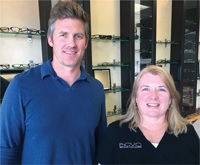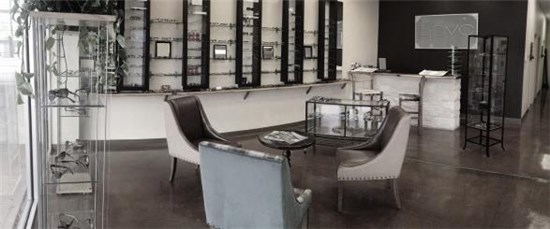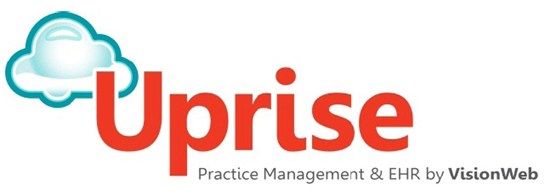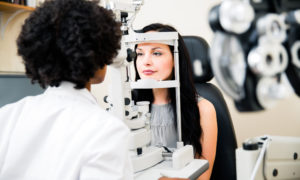By Brad Dobson, OD,
and Desiree Davis

June 10, 2015
SYNOPSIS
Choose a practice management system that increases efficiency by integrating with other systems in your office—and saves doctor time and staff time.
ACTION POINTS
ESTABLISH GOALS. Decide if what you need will be taken care of with just a PM system, or if an EHR also is needed.
TRAIN STAFF. Train your doctor first, and your office manager second. From there your office manager can train the rest of the team.
FREE UP STAFF TIME. By integrating with patient communication systems, texts can automatically be sent about appointments and glasses/CL pick-ups.
When I graduated from optometry school in 2003, and opened my own practice, I knew I needed a robust practice management system to help maintain and organize the busy schedule of the practice. In addition to organizing our schedule, as time went on, we realized it would increase our efficiency if the system could integrate with the patient communication systems we use, ZocDoc and Solutionreach.
Establish PM System Goals
The first step when choosing a system is to decide which practice goals you want the new system to help you accomplish. In our case, we wanted to enhance patient care by being able to easily communicate with patients while giving them an experience interacting with our office that was smooth and hassle-free.
To start with, we kept it simple. We felt a practice management system alone, rather than an EHR, or a PM System plus an EHR, was sufficient to house our patients’ records electronically and expedite communications.
Sponsored Content
Fully-Integrated, Cloud-Based Practice Management/EHR: Uprise
Uprise is a fully-integrated, 100 percent cloud-based, practice management and EHR solution designed specifically for optometric practices. It also has complete 2014 certification for Meaningful Use, and ICD-9 and ICD-10 functionality.
Its smart workflow guides you through diagnosis, treatment, coding and billing in fewer clicks compared to other systems. And, it was designed to work seamlessly on a tablet or computer, PC and Mac, so you pick the device that works for you. Since Uprise is completely cloud-based, you can log in anywhere with an Internet connection.
With Uprise, all of the tools for product catalog management, patient recalls, e-prescribing, patient education and code verification are embedded, so you don’t have to set up or manage third-party integrations. Plus, there’s no hardware to install, so you can go live faster.
You get a solution that’s easy to use, looks great and is packed with features you and your staff will love.
Familiarity Can Ease Implementation
I chose OfficeMate from Eyefinity because I felt the staff members I hired would be familiar with it, since it is such a common PM system in the optical industry.
Being the doctor, I was trained first, followed by our office manager, Desiree. Once we got the hang of the new system, Desiree trained the rest of our five-person staff, and any additional employees we added.
Training is such an important step in the implementation process with a new software system. So, understanding the training and support available from your vendor should be something to take into consideration when selecting a system. With OfficeMate, there is a help hotline we can use as issues we can’t figure out arise with the system.
Free Up Staff Time, Realize Greater Efficiency
We upgraded to OfficeMate 11 in November 2014, and after a few-month learning curve, we realized the advantage of having aPM integrated with a patient communication system to automatically text and call patients with appointment reminders as soon as the appointments are booked into the PM. Our staff altogether saves up to at least five hours of work per week from not having to call to confirm, and then, remind, patients of appointments.
Key Benefit: Automated texting/calling for exam reminders = savings 5 hours staff work/week.
Next, weintegrated with ZocDoc and Solutionreach, so that our system automatically alerts patients that their glasses or contact lenses are ready for pick-up. Our staff just inputs into the PM system that the glasses or contacts have arrived, and then a message is automatically sent by the PM system to Solutionreach to notify patients by text, automated voice mail, or e-mail (whichever the patient has told us is their preferred method of communication).
Key Benefit: Patients are automatically alerted when glasses or contacts are ready.
It’s too early for us to measure the financial impact of freeing up that staff time, but the less time my staff is on the phone making calls about upcoming appointments and glasses and contact lens pick-ups, the more time they are spending interacting with patients in our optical, facilitating sales.
Identify EHR Tipping Point
So far, OfficeMate has been enough to take care of our patient health record needs, and other office processes, like scheduling and vendor management. However, with the rollout of ICD-10 in October 2015, we will consider purchasing Eyefinity EHR. One of the weaknesses of using OfficeMate to store patient health records is there is no ready coding template that can easily be pulled up in the exam room. For that reason, we currently wait until after the exam to do the necessary coding. The added complexity of ICD-10, however, makes this approach more inefficient and difficult.
Bee Cave Vision Center 
Brad Dobson, OD
Austin, Texas
Locations: 1
Doctors: 1
Number of support staff: 6
Patient records: >4,000
Annual exams: >1,500
Annual revenues: >$700,000
Eyefinity EHR has templates and auto-coding we can use to code as the exam progresses, rather than waiting until after. Like the ability of OfficeMate to integrate with our patient communication systems, having the option of easily coding right in the exam room will create more efficient work processes, freeing up even more staff time and creating a more seamless patient experience–with an even more attentive staff to serve them.
Key Benefit: Auto-coding makes coding in the exam room feasible.
Utlimately, each practice is unique in its needs and will have different goals for the areas in their workflow that they’re looking to streamline. In the end you want a system that’s going to help your staff perform their jobs more efficiently. A happier staff means happier patients, and patient satisfaction should play a large role in the decisions you make for your practice.
Related ROB Articles
EHR & PM Systems: Make Data-Based Improvements in Work Flow & Efficiency
Use EHR to Track Performance Benchmarks
Metrics to Manage By: How to Calculate Chair Cost per Exam
Brad Dobson, OD, is the owner of Bee Cave Vision Center in Austin, Texas.Desiree Davis is the office manager of the practice. To contact them: contactus@beecavevisioncenter.com




























